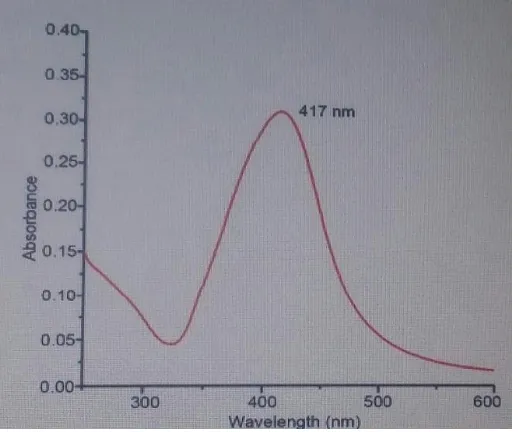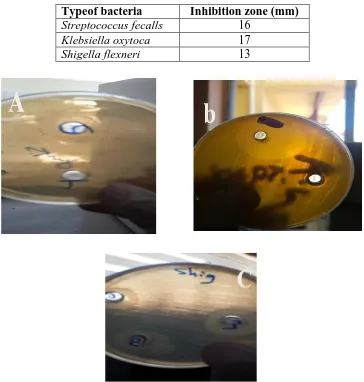SYNTHESIS SILVER NANOPARTICLES AS ANTIMICROBIAL AGAINST GRAM – NEGATIVE AND GRAM – POSITIVE MULTIDRUG –RESISTANCE (MDR) BACTERIA
Full text
Figure


Related documents
This study is intended to determine susceptibility and resistance pattern of pathogenic Gram- negative bacteria isolated from rectal swabs of chicken against16 an-
The specificity and sensitivity of the microarray in detecting resistance genes was tested with gram-positive bacteria of eight different genera ( Bacillus , Clostridium ,
This study aims to assess bacteriological profile and analyze the situation of antibiotic resistance, multidrug resistance, and ESBL producing Gram negative bacteria in chicken
Conclusion: Among the three metal oxide nanomaterials, ZnO showed greatest antimicrobial activity against both Gram-positive and Gram-negative bacteria used in this
The qualitative screening of the antimicrobial activity of the tested compounds performed using stock solutions of 5 mg/ml obtained in DMSO allowed the selection of the
It describes not only a new method of green synthesis of silver nanoparticles but also their physical attributes, antibacterial activity against human and plant
The largest gram-negative resistance problem in Singapore hospitals is ESBL-producing Enterobacteria- ceae particularly Klebsiella spp. ESBL-producing Enterobacteriaceae were
So, the main aim of our study was to synthesize silver nanoparticles (AgNPs) using aqueous leaf extract of Ranunculus laetus using 0.1 M silver nitrate solution, and the